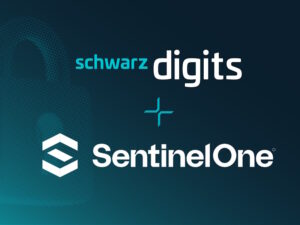Key Takeaways
- CISPE (Cloud Infrastructure Service Providers in Europe) announced a €1 million investment in open‑source software to accelerate the Fulcrum Project and enable a distributed, “Trump‑proof” European cloud [^1].
- The investment updates CISPE’s Digital Sovereignty Principles with three new imperatives: invest in European cloud/AI, ensure independence from non‑European government influence, and pool resources through open frameworks [^1].
- The Fulcrum code, now open‑source on GitHub, will let European providers federate infrastructure and compete with US hyperscalers [^1][^9].
- Analysts view the move as a signal of growing EU pressure for cloud autonomy and a catalyst for multi‑cloud, open‑source strategies [^4][^7][^10].
- Future steps include wider adoption of the Fulcrum framework, integration with Gaia‑X labels, and possible policy reforms to favor European sovereign cloud services [^5][^6].
Introduction
CISPE, the umbrella association for cloud infrastructure service providers in Europe, has taken a concrete step toward greater digital sovereignty. In a press release dated 27 March 2025, the group announced a €1 million strategic investment in open‑source development for the Fulcrum Project, a software stack designed to federate distributed cloud resources across European providers [^1]. The initiative is framed as a response to geopolitical concerns—most notably the risk that foreign governments could disrupt, access, or withdraw cloud services, a scenario CISPE describes as needing “Trump‑proof” solutions [^9]. By updating its Cloud Sovereignty Principles and backing the open‑source Fulcrum code, CISPE aims to create a scalable, European‑owned alternative to the dominant US hyperscalers.
Updated Cloud Sovereignty Principles
The press release outlines three new imperatives that reshape CISPE’s policy framework:
- Buy and invest in European cloud and AI infrastructures.
- Ensure choice of cloud solutions independent from non‑European government influence.
- Pool distributed European cloud resources through open frameworks.
These pillars echo earlier calls for a more diverse, bottom‑up cloud market rather than “Airbus‑style” top‑down champions [^1].
Fulcrum Project: Open‑Source Federation Layer
The €1 million funding will accelerate development of the Fulcrum code, which has been released under an Apache‑compatible license on GitHub [^1][^9]. Fulcrum provides a cloud‑infrastructure management system that can orchestrate and monitor resources from multiple providers, enabling a “multi‑layer federation” that mimics the scale of hyperscalers while remaining fully European [^1].
“The financial backing and expert collaboration from CISPE have been transformative. With the publication of our open‑source code, we aim to foster deeper industry collaboration, empowering European providers to scale and deliver strategically autonomous cloud solutions,” said Emile Chalouhi of the Fulcrum Project [^1].
CISPE Secretary General Francisco Mingorance highlighted the strategic necessity: Europe has more cloud providers than any other continent, and by pooling them, the region can achieve greater reach and resilience than any single company could [^1].
Geopolitical and Market Context
Analysts see the investment as part of a broader EU push for data and cloud autonomy. Network World’s coverage notes that customers increasingly fear that foreign governments could impose tariffs, demand data, or restrict services, driving demand for “Trump‑proof” alternatives [^4]. The move aligns with EU‑wide initiatives such as Gaia‑X, which seeks to certify “trust‑labelled” European cloud services [^5][^6].
According to a Digit article, the Fulcrum initiative is positioned as a “sovereign, Trump‑proof” offering that could protect public administrations and SMEs from geopolitical shocks [^7]. The same piece quotes CISPE’s view that the current market lacks an effective choice of sovereign cloud solutions at scale.
Industry Reactions and Potential Impact
Key stakeholders have voiced cautious optimism:
- Emile Chalouhi (Fulcrum Project): Emphasized the collaborative nature of the open‑source effort and its role in scaling European software adoption [^1].
- Ben Maynard (CISPE Communications Director): Acknowledged the investment is “a drop in the ocean” but additive to existing work by CISPE members [^4].
- Analysts (e.g., IDC’s Dave McCarthy): View the funding as a signal that EU firms may need to adapt costly compliance and infrastructure strategies to remain competitive [^4].
While the €1 million sum is modest compared with the billions spent by US hyperscalers, it serves as a catalyst for further private and public funding, especially if EU procurement rules begin to prioritize services bearing Gaia‑X or CISPE sovereign labels [^5][^6].
Future Roadmap
The immediate next steps include:
- Broadening participation in the Fulcrum ecosystem to include more ISPs, carriers, and edge providers.
- Integrating Fulcrum with Gaia‑X Trust Framework levels to achieve certification and market visibility [^5].
- Advocating for EU procurement reforms that would channel public spending toward European‑controlled cloud services, potentially unlocking €20 billion annually [^5].
- Monitoring the impact of related antitrust actions against non‑European cloud giants, which could further reshape the competitive landscape [^9].
These actions are expected to be detailed in upcoming workshops and policy papers slated for September 2025 [^5].
Conclusion
CISPE’s €1 million investment in the open‑source Fulcrum Project marks a concrete step toward a more federated, sovereign European cloud. By updating its sovereignty principles, releasing the Fulcrum code, and advocating for supportive procurement policies, CISPE aims to reduce Europe’s reliance on US hyperscalers and mitigate geopolitical risks. While the funding itself is modest, it signals a broader strategic shift that could accelerate the development of a competitive, multi‑cloud ecosystem rooted in European values and technology.
References
[^1]: CISPE (2025-03-28). “CISPE updates its Cloud Sovereignty Principles and Takes Action with €1 million investment in Open‑Source to Deploy Distributed Cloud“. CISPE. Retrieved 2025-10-22.
[^2]: CISPE Press Release Archive (2025). “Press release | CISPE – The Voice of Cloud Infrastructure Service Providers in Europe“. CISPE. Retrieved 2025-10-22.
[^3]: CISPE (2025). “Projects“. CISPE. Retrieved 2025-10-22.
[^4]: Schuman, Evan (2025-04-01). “European cloud group invests to create what it dubs “Trump‑proof” cloud services“. Network World. Retrieved 2025-10-22.
[^5]: CISPE (2025-07-04). “CISPE Launches Sovereign Cloud Manifesto“. CISPE. Retrieved 2025-10-22.
[^6]: CloudFest (2025-09-10). “CISPE Sovereign Cloud Manifesto Aims to Protect European Cloud Providers“. CloudFest. Retrieved 2025-10-22.
[^7]: Quinn, Tom (2025-04-02). “Can Europe ‘Trump‑proof’ Its Cloud Services?“. DIGIT. Retrieved 2025-10-22.
[^8]: Polsonetti, Chantal (2025-08-05). “Open Source Reference Architecture Looks to Enable European Digital Cloud Sovereignty“. ARC Advisory Group. Retrieved 2025-10-22.
[^9]: Koch, Marie‑Claire (2025-03-31). “EU cloud association CISPE calls for services to be made “Trump‑proof”“. Heise Online. Retrieved 2025-10-22.
[^10]: Emma Team (2025-02-27). “Five Key Takeaways for Businesses on the Future of Cloud Sovereignty“. Emma.ms. Retrieved 2025-10-22.




One Comment “CISPE updates its Cloud Sovereignty Principles and Takes Action with €1 million investment in Open-Source to Deploy Distributed Cloud”